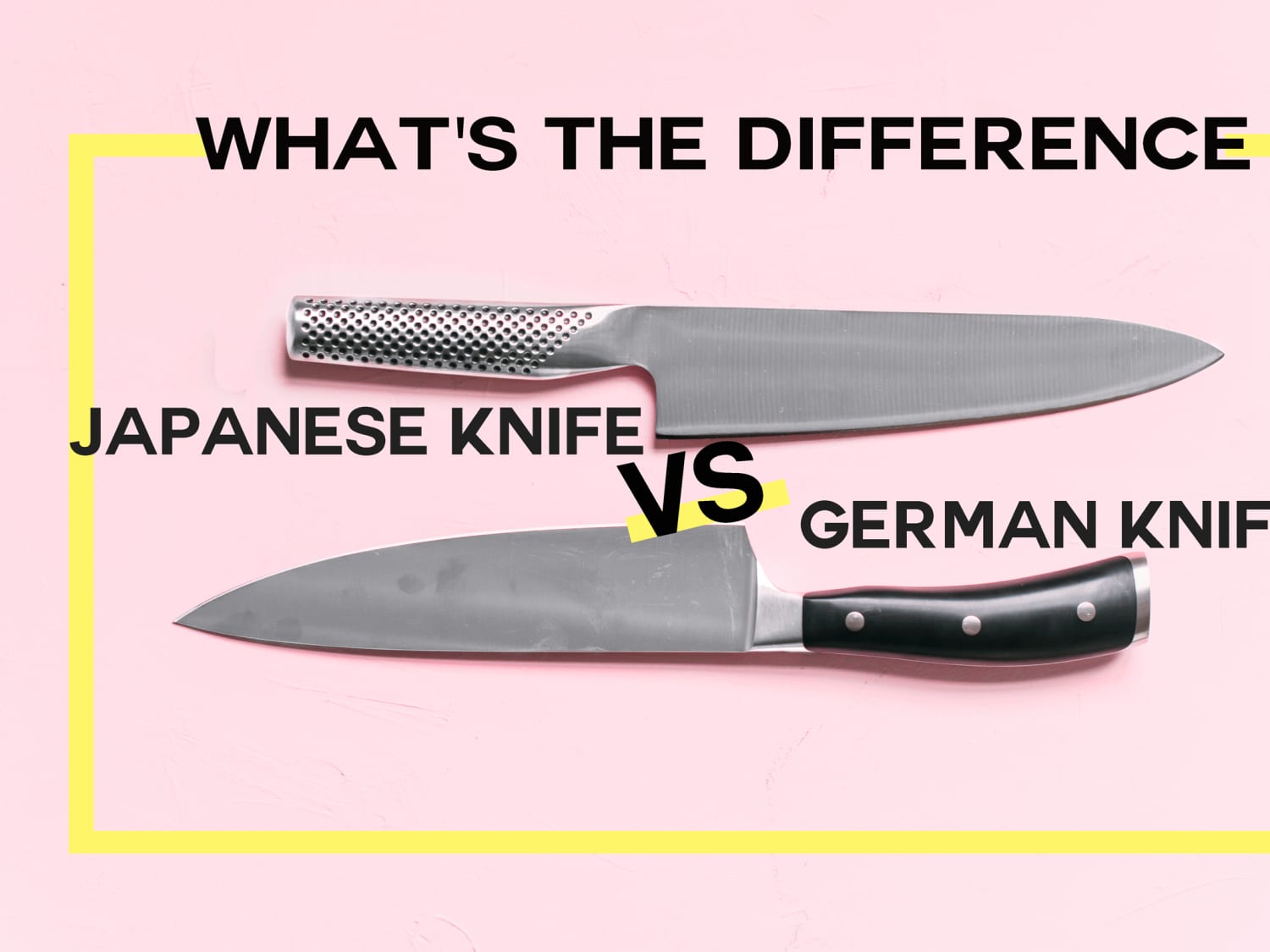
The blade angles on the German knives are usually between 15-20 degrees per side. Japanese knives historically focus on a high Carbon content whereas German knives focus on durability.
Japanese knives more often than not.
Japanese vs german knives. German knives are heavier and more forgiving while Japanese knives are lighter sharper and require more careful handling. While these differences can be quite noticeable you should still get whichever type of knife appeals to you. Having fun in the kitchen is just as important as all of these other characteristics.
German knives come in around 57 on the scale whereas Japanese knives are closer to 60 to 63. Harder Japanese knives will hold an edge better. However that same harder steel is less durable and.
Japanese VS German Knives SymmetryDifferencesUses Mainly when you talk about kitchen knives you will hear about two knives which are very common- Japanese and German knives. Though there are many other types of knives too its safer to say that these two are the most pervasive so we can compare in Japanese VS German Knives. As a general rule Japanese knives do rust more easily than German knives although this difference is decreasing.
Japanese knives historically focus on a high Carbon content whereas German knives focus on durability. As a result pretty much any quality German knife will be made from a good stainless steel. Japanese vs German Chef Knives.
Main Differences Besides the slight differences in design Japanese chefs knives are very different from German knives when it comes to bevel angle tang blade material and handle design. Though there are always exceptions the main difference between Japanese and German blade finishes is that German knives are smoother while Japanese knives have more texture. Japanese knives are also more likely to employ patterns such as a hand-pounded Damascus finish.
Ultimately German vs. Japanese is not that important especially as the gap between the styles of knives is diminishing. Some German knives are now sharpened to a more acute angle Mayer explains adding that new alloys have improved the durability of Japanese knives.
While German blades are typically finished with a machine Japanese blades are almost always hand-honed and hand-refined. The edge of most Western-style blades is curved to allow for rocking cuts while Japanese blades are straighter in order to facilitate clean precise slices. Not just the Japanese knives are lightweight they are also slim in thickness Their slim blades help you take deep precise cuts more effectively than German knives.
The German knives are slightly heavier without any doubt. These knives hold a thick blade whereas Japanese Deba holds a thick spine on the blade. Japanese knives tend to be thinner and sharper more useful for fine cuts on delicate fish.
Cutting heavier or tougher things however might be more of a challenge and can even damage more specialized knives. German knives will be thicker and therefore can take a lot more. There are many differences in the features of German and the Japanese styles of knives and the basic difference lie in the type of steel used in making the blades.
Other differences in the two most popular styles of knives include blade shape the weight of the knife and bevel etc. The blade angles on the German knives are usually between 15-20 degrees per side. Certain German brands like Wusthof however have a 14 degree angle per side except for their Asian style Santoku Nakiris and Chai Dos.
Japanese knives more often than not. And there is a very simple reason for this. Traditionally German chef knives are ambidextrous while Japanese knives are not.
Usually German knife edges are sharpened on both sides of the blade meaning the edge comes to a symmetrical peak allowing for right- or left-handed cuts without incident. Japanese construction For those who prefer Japanese models Shun knives are among the best knives from Japan. Disadvantages of Shun knives.
Their most knives are not full tang. For their knives they mostly use only wood for handles. History of Wusthof Knives.
Wusthof Company was established in Solingen Germany around 1814.
